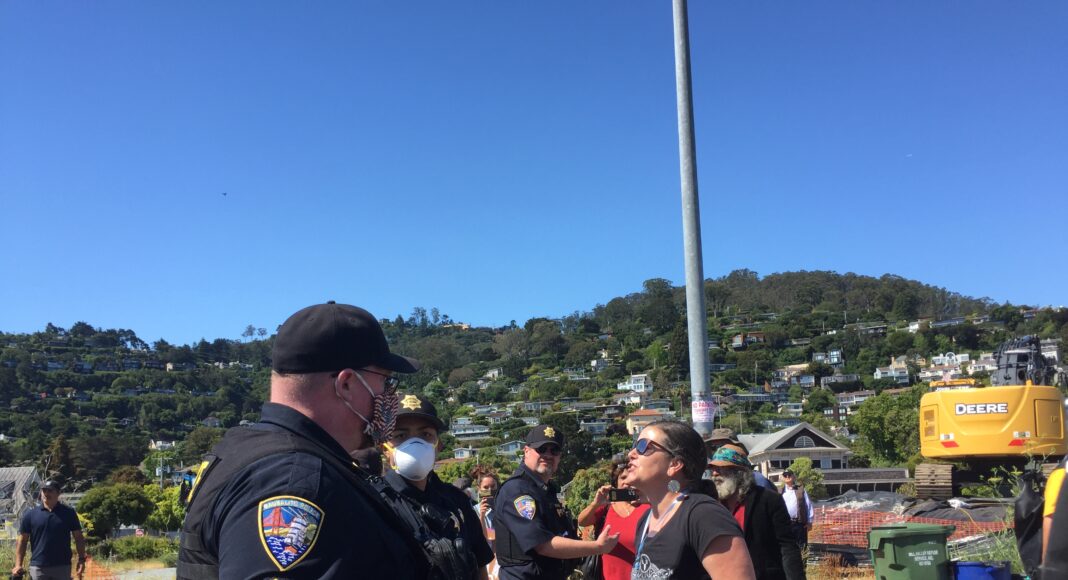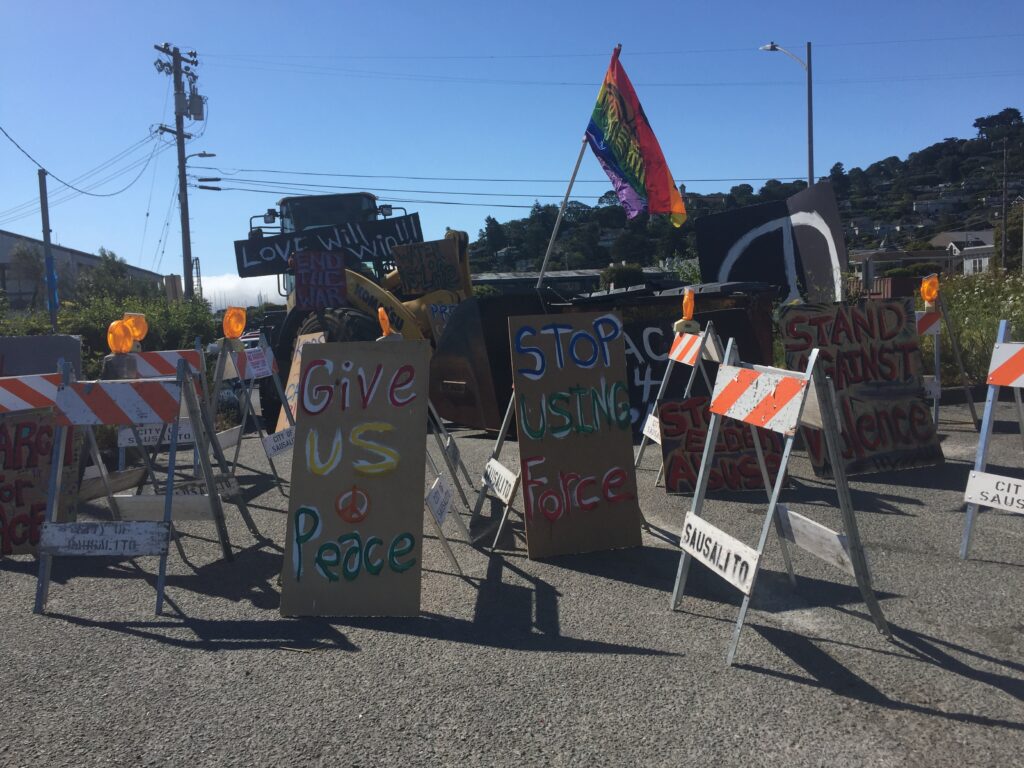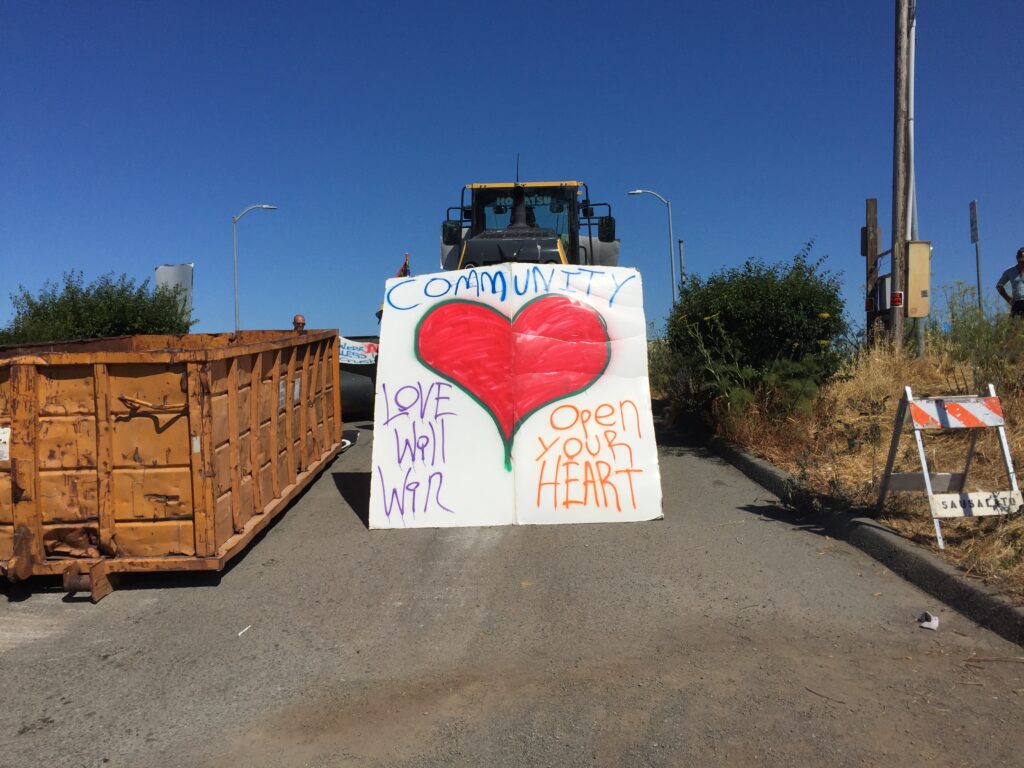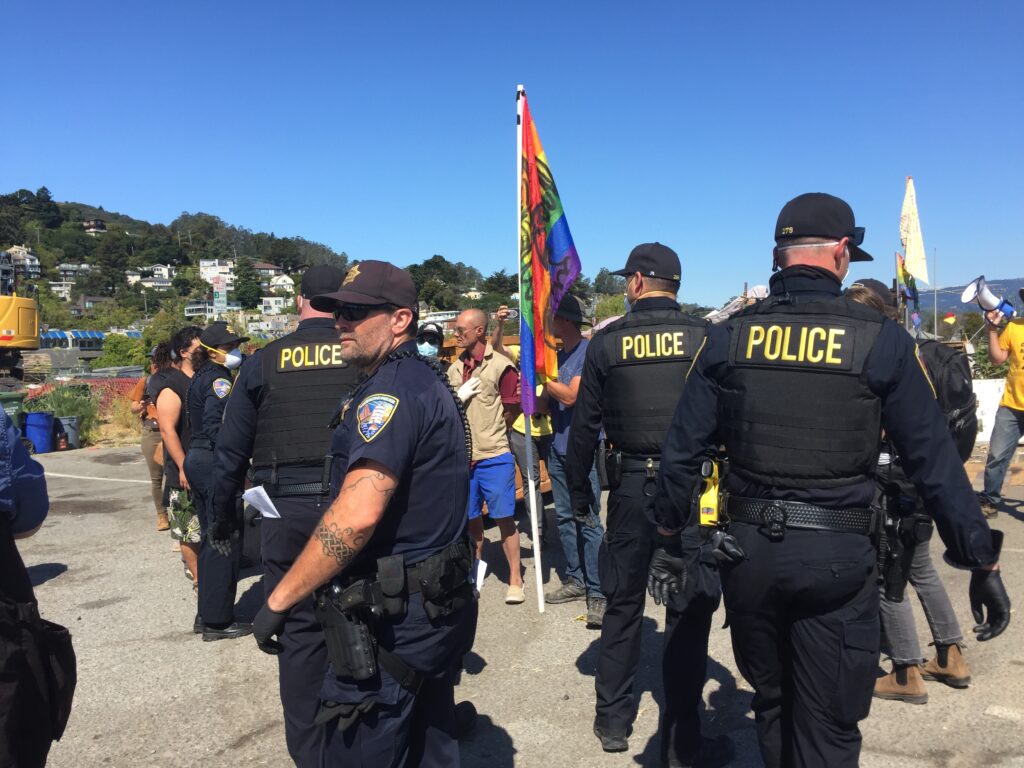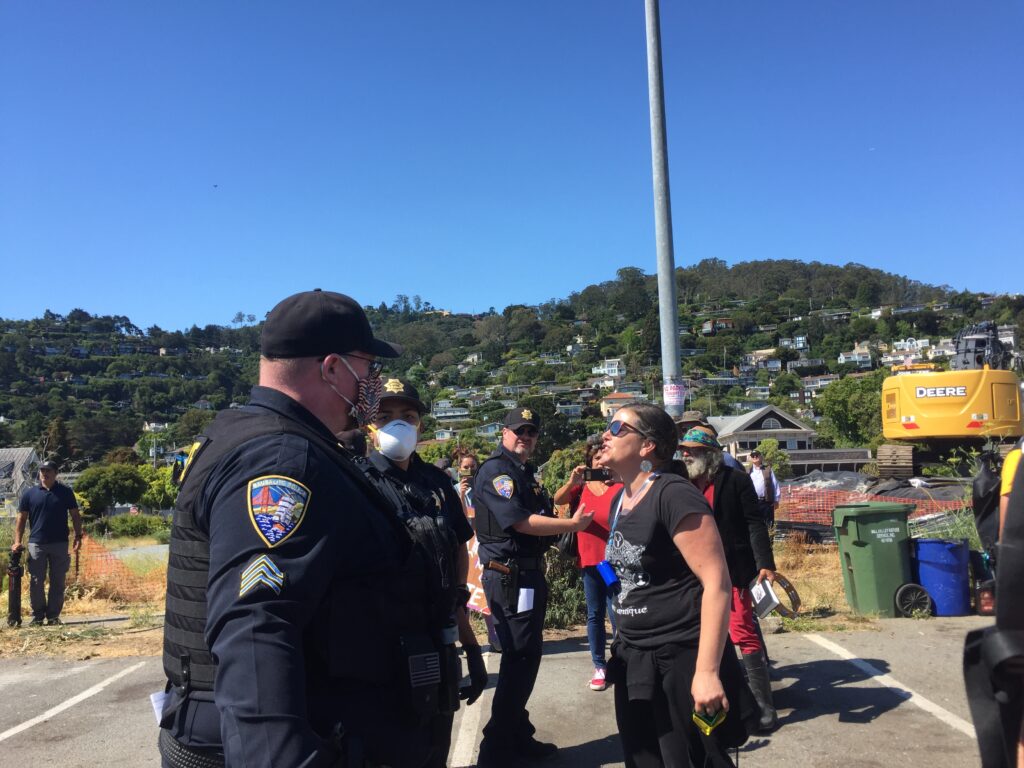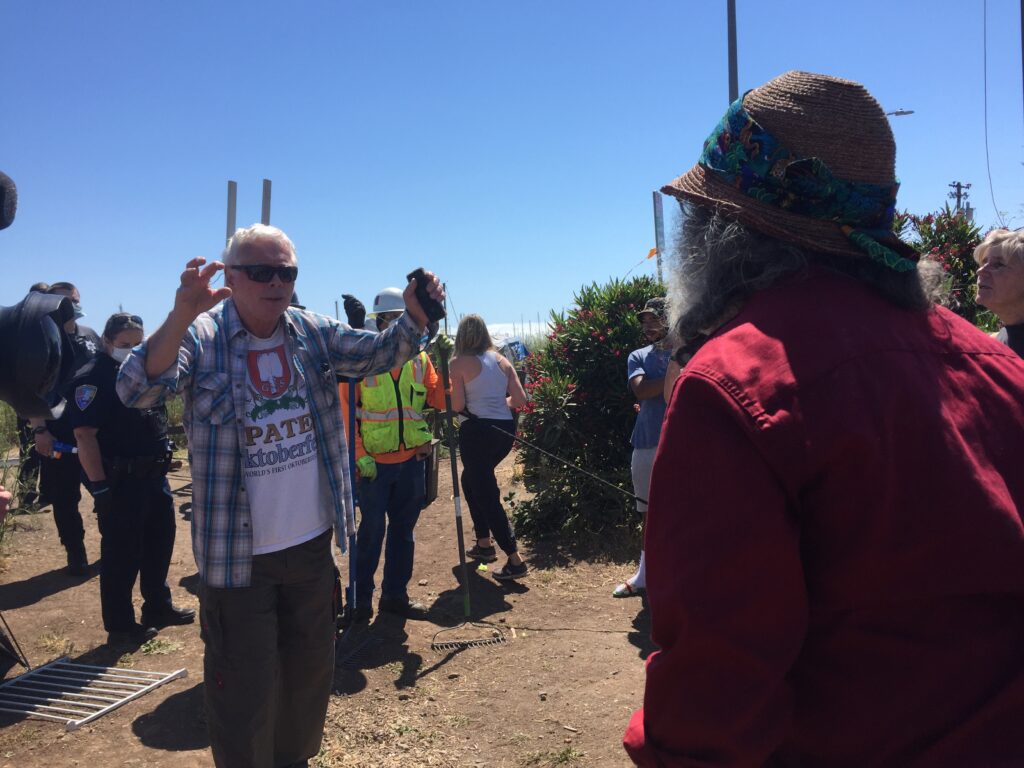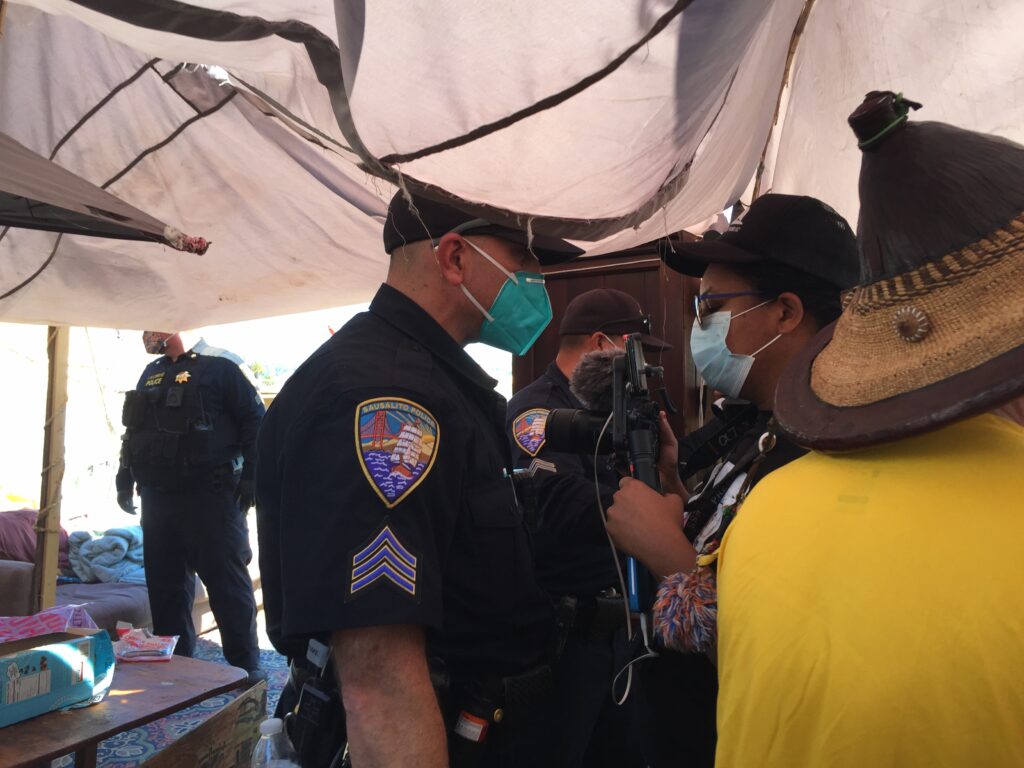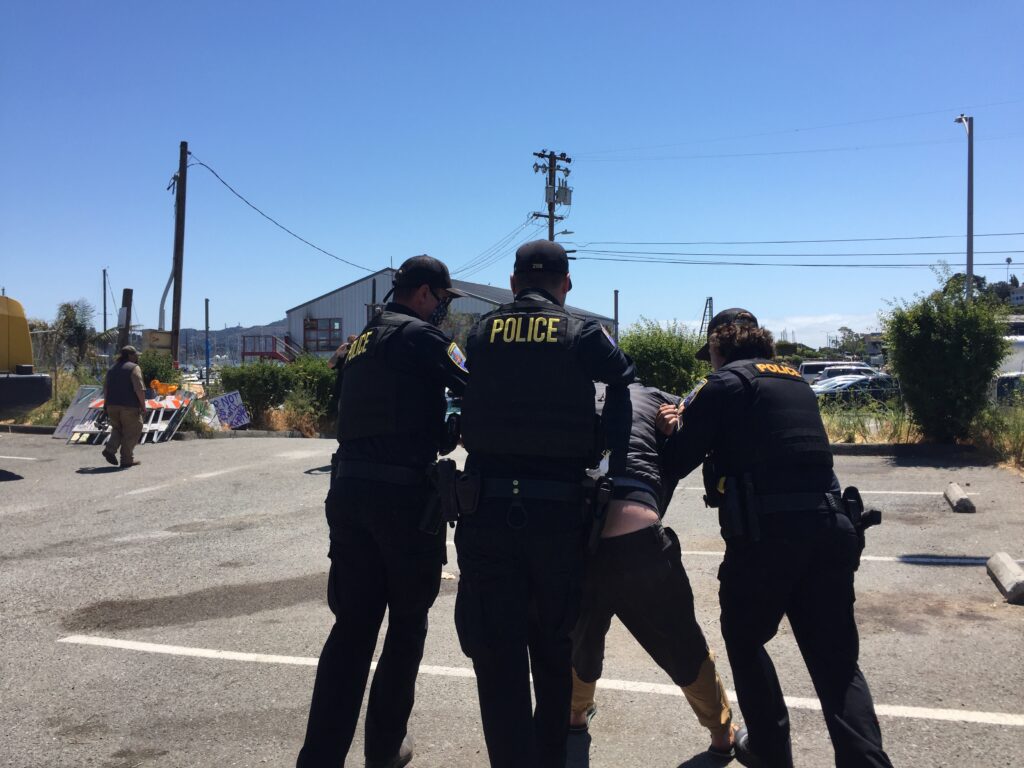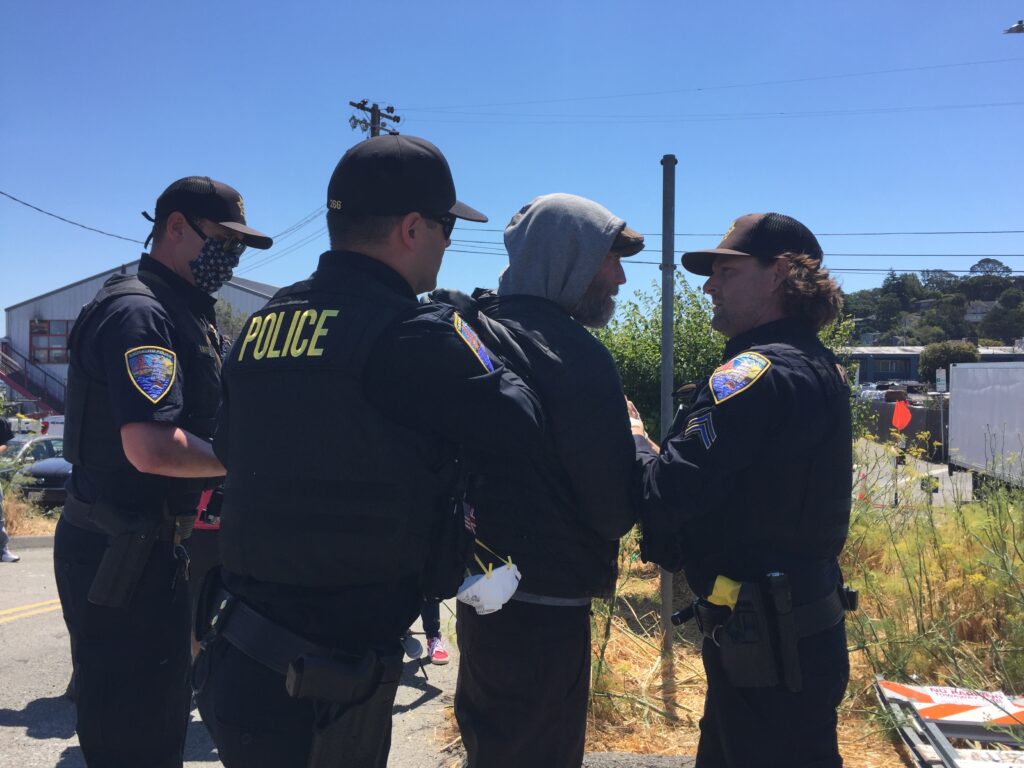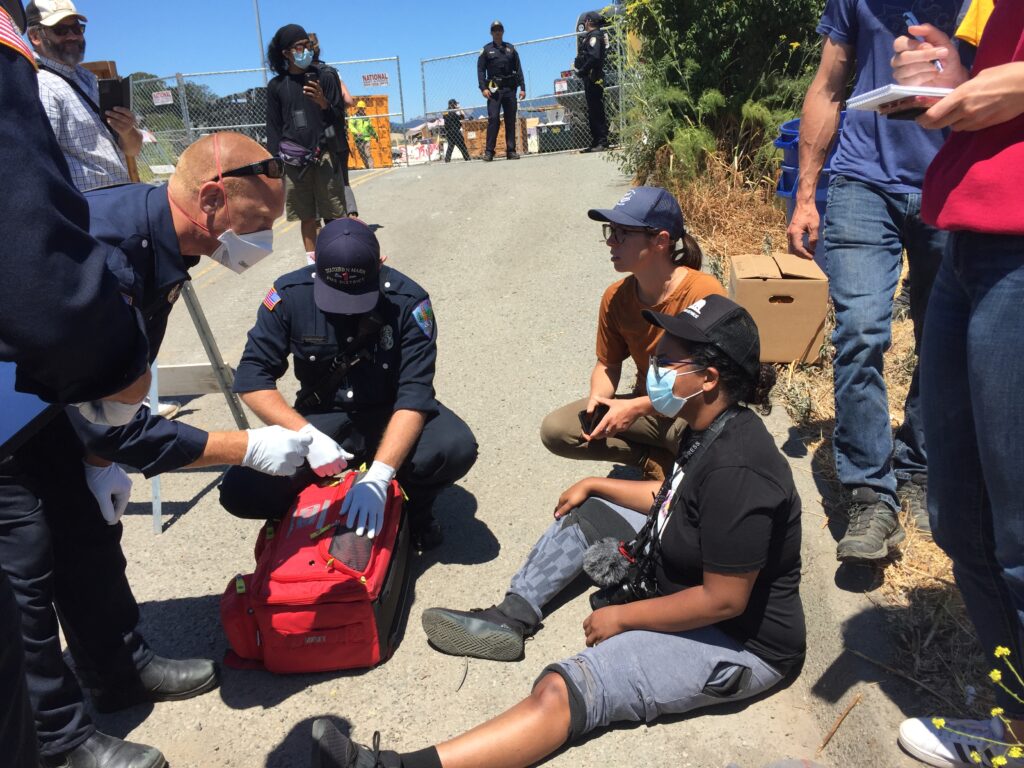The Sausalito police arrived at the downtown homeless encampment before 6:30 a.m. on Tuesday to prepare for the day’s work: clearing the area of its unhoused occupants and their belongings. Within minutes, a bulldozer rolled up.
Daniel Eggink, 84, the first person to pitch a tent on the empty plot of land near Dunphy Park last December, held an American flag and walked in the parking lot adjacent to the encampment. Upon seeing the bulldozer, Eggink moved toward it and then stopped in front of a police car. In a show of unnecessary force, officers approached Eggink and one put his hands on the elderly man.
“Don’t touch me,” Eggink said.
Activist and part-time resident of the encampment, Robbie Powelson, placed himself between an officer and Eggink. The police then arrested Powelson for obstructing/resisting a police officer, unlawful assembly, and camping in a park, according to Charles Dresow, Powelson’s attorney. It was the only arrest of the day.
“He shouldn’t be charged,” Dresow said. “We’ll just have to see what the DA thinks. The Constitution protects peaceful protests.”
The bulldozer pulled into the parking lot. Protesters placed signs on the piece of equipment: “Love Will Win, End the War, Protect Our Community.”
About a dozen campers, along with their supporters, made a last stand at the camp near Dunphy Park, which abuts a large area of toxic dirt, and protested its closure. Most of the campers had already relocated to a new city-designated encampment at the less visible Marinship Park, located about a mile away, after Sausalito served them on Friday with a notice to vacate. Last month, a federal court granted the city permission to move the encampment, although it maintained an order to allow daytime camping.
Initially, the crowd and the cops milled about the parking lot. Protesters yelled through megaphones and heckled the police. The campers insisted the eviction notice was illegal because it listed the wrong address. Supporters demanded the police produce a signed warrant. Police refused to answer questions, directing people to contact Sausalito Mayor Jill Hoffman.
When contractors hired by the city arrived to erect chain link fencing around the tents on public property, the police and the protestors moved into the encampment. Police checked inside the remaining tents for “hazardous” materials, while the protestors banged on drums, shook a tambourine, sang, preached and gave interviews to Bay Area reporters.
The camp residents spoke of the need to stay at their current location on Richardson Bay, which gives shore access to “anchor outs,” the mariners living on the anchorage. Though a federal judge ruled the new location at Marinship Park is not contaminated, the campers claim it is polluted due to the adjacent boat crushing facility spewing fiberglass dust into the air. They also wanted more time to move structures they had built, including a large wigwam under construction by Chris, an Indigenous man living at the encampment.
“They pretty much just want to destroy everything we’ve been building,” Michael Ortega said. Ortega, his partner and their child became camp residents after his boat was destroyed in a fire when police raided it to arrest another man living on the vessel.
Powelson was released from the Marin County jail and returned to the encampment. Amid cheers, Powelson took the megaphone and addressed the crowd. Mostly, he referred to the campers who were former mariners living on the Bay and had their boats seized and destroyed by the Richardson Bay Regional Agency for violating the 72-hour anchorage regulation.
“Right now, what we’re witnessing, the City of Sausalito, the Bay Conservation Development Commission, the Richardson Bay Regional Agency dispossessing an entire community of people,” Powelson said. “Homes have been crushed. This camp was formed by the misguided and cruel, unlawful policies of the alphabet agencies on the Bay, of the City of Sausalito. We created this community over six months ago. Now they’re tearing it down.”
An elderly Sausalito resident, Karl Preskot, entered the encampment and yelled at the campers to go home. He was met with jeers from the crowd.
“I can’t walk here at night safely because I’m scared,” Preskot said. “This is not their property.”
An activist from Wood Street People’s Collective in West Oakland, Leah Van Winkle, returned from a tour of the Marinship Park encampment, where all the spaces marked by the city were already occupied. Van Winkle questioned whether the city was violating Martin v Boise by forcing the closure of the encampment and not providing an alternative space for the campers. Martin v Boise, a 9th Circuit Court of Appeals ruling, affirmed people cannot be punished for sleeping outside on public property when a city cannot offer them an adequate shelter option.
At about 11:45 a.m., the scene reached a fevered pitch. A dog fight erupted between a St. Bernard mix and a Siberian Husky. Officers shouted for people to leave the encampment. People began moving toward the parking lot, but not quickly enough to satisfy some of the police. One cop, for no apparent reason, aggressively kicked down a wood wall of the large common area structure. A reporter was knocked to the ground and injured.
Once the encampment was cleared of residents and protesters, the contractors began taking down tents and other structures. The City of Sausalito was forced to hire outside contractors when the union for the employees of the Sausalito public works department sent a cease and desist letter to the city, which stated union members could not work to remove the encampment.
Reverend Paul Mowry, of the Sausalito Presbyterian Church, watched as the camp was dismantled.
“The city council, by a vote of 4 to 1, passed a resolution that they were committed to treating people who are experiencing homelessness with compassion and dignity,” Mowry said. “There’s very little, except for maybe the Safe Harbor program [a program that covered slip fees for a few anchor outs], that the city has ever done to make that a true fact.”
Slowly, people left the encampment near Dunphy Park and made their way to Marinship Park, where all the spaces inside a fenced area were filled. The fence is covered by a heavy material, which keeps the campers from seeing out and the public from seeing into the encampment.
“We’re trying to find a space for everyone,” Sausalito Mayor Jill Hoffman said. “It’s going to get sorted out. It might take a day or two.”
The campers took the matter into their own hands and pitched their tents on the other side of the fence, where they remain visible to the public.
“These are the most vulnerable people around us,” Reverend Mowry said. “They set up camp behind a football field of toxic dirt. They were not in Dunphy Park. Yet, the city council moves them to Marinship Park, which is actually a park in use. They just want to get them out of sight.”

